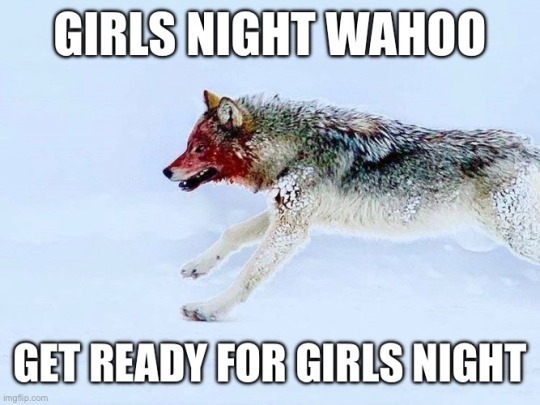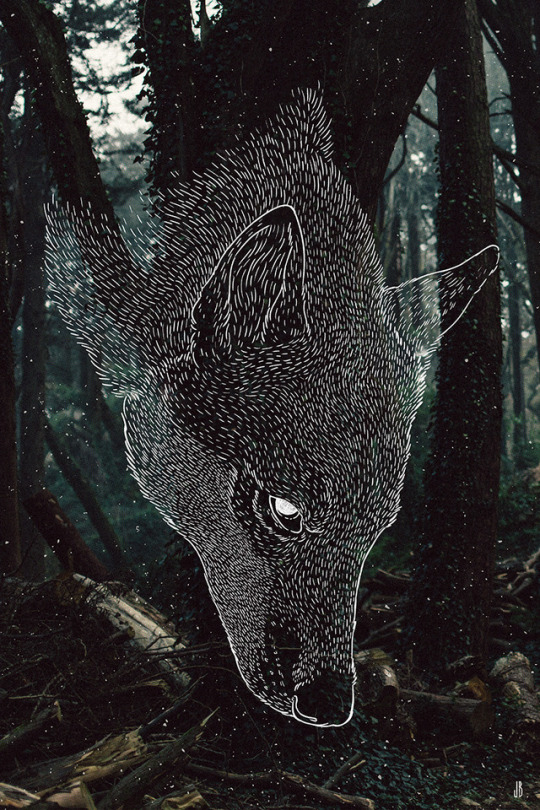Text
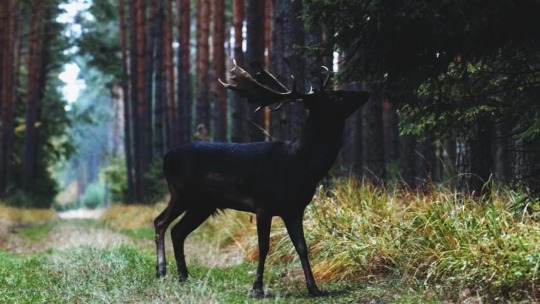



Black fallow deer seen in the Barycz Valley - Landscape Park in Poland
3K notes
·
View notes
Text
Authentic Irish Foods for Bealtaine




🐖 Pig Meats (and blood puddings)
- Irish traditon for pig slaughter states that its only appropriate to slaughter pigs in months which have the letter 'r' (this excludes May, June, July and August; presumably because these warm months would cause spoilage)
- Irish tradition also states that St. Patrick's day is a day which pigs would be slaughtered (presumably in higher numbers than usual) so its safe to assume that Irish peoples would want to finish the meats off around Bealtaine to prevent spoilage
🦌 Deer Meat
🐝🍯 Honey
🐄🥛Cow Dairy products
🐟 River fish (like perch)
🌿Native culinary plants that grow in Ireland this time of year
Dandelions
Wild garlic
Primrose
Nettles
Vetch
Elderflower
Sorrel
Sea lettuce
#irish#irish food#food#Bealtaine#beltaine#beltane#foraging#food cycles#blackcrowing#irish paganism#paganism#irish polytheism#celtic paganism#celtic polytheism#pagan#celtic#irish reconstructionist#irish reconstructionism
15 notes
·
View notes
Note
alas it is not, but it COULD BE!
The best tips I have for making crow friends are to find your nearest local murder and routinely bring them snacks (by routinely I mean at about the same time of day so they know when to expect you), if your crow friends are unlikely to see you leaving said snacks you may want to make a distinctive noise (nothing too loud so they don't get spooked, just something to draw their attention).
After they become accustomed to this they will recognize you as friend-with-snacks and may begin showing up in unusual places trying to see if you will give them snacks anywhere/anytime, it may be unwise to entertain this since they will likely take full advantage, but that's really up to you. You will also probably begin seeing gifts left for you which is delightful. Your new crow friends may leave these gifts where you put snacks, but they are cunning little buggers so you may also find gifts in unusual places where they are sure you will find them (like on your windshield).
Do offerings have to consist of food/drink?? I live in a really old, shitty building, and despite being a neat-freak with an intense phobia for bugs, I've had like 4 infestations as a consequence of living here for 10 years. I do have a balcony but I can't really use it for offerings like this unless I want bees and wasps to upset my neighbors (and the landlord). So leaving out food and drinks isn't really a viable option :/
yikes! Sorry you're having so many issues with bugs!
So you have a couple of options, you can still offer food and drink and then just consume it yourself to avoid any unfriendly intruders. While I personally dislike consuming my offerings I find most pagans split about half and half on the idea of it it is appropriate or not.
Secondly, you ABSOLUTELY can give offerings that are nonparishable. Some people offer tasks ('I'm dedicating this cleaning spree to Frigga' 'I dedicate this study session to Ogma' etc), others might offer pretty rocks or leaves or feathers they find throughout their day, I have a dedicated necklace for Macha which I keep on my altar if I'm not wearing it.
The options for things you can give to your deities is as limitless as your imagination. Its just that food/drink are traditional and tend to hold deep cultural significance to people, so we often reach for those first.
26 notes
·
View notes
Note
Do offerings have to consist of food/drink?? I live in a really old, shitty building, and despite being a neat-freak with an intense phobia for bugs, I've had like 4 infestations as a consequence of living here for 10 years. I do have a balcony but I can't really use it for offerings like this unless I want bees and wasps to upset my neighbors (and the landlord). So leaving out food and drinks isn't really a viable option :/
yikes! Sorry you're having so many issues with bugs!
So you have a couple of options, you can still offer food and drink and then just consume it yourself to avoid any unfriendly intruders. While I personally dislike consuming my offerings I find most pagans split about half and half on the idea of it it is appropriate or not.
Secondly, you ABSOLUTELY can give offerings that are nonparishable. Some people offer tasks ('I'm dedicating this cleaning spree to Frigga' 'I dedicate this study session to Ogma' etc), others might offer pretty rocks or leaves or feathers they find throughout their day, I have a dedicated necklace for Macha which I keep on my altar if I'm not wearing it.
The options for things you can give to your deities is as limitless as your imagination. Its just that food/drink are traditional and tend to hold deep cultural significance to people, so we often reach for those first.
#ask#anon#offerings#pagan#paganism#polytheistic#polytheism#deities#deity work#deity worship#deity#blackcrowing
26 notes
·
View notes
Note
Would you happen to know of any Welsh reconstructionist blogs?
@ofbloodandfaith would be a good place to start! I also suggest you poke around #cymraeg paganism!
1 note
·
View note
Text
Important Facts about Bealtaine from an Irish Celtic Reconstructionist
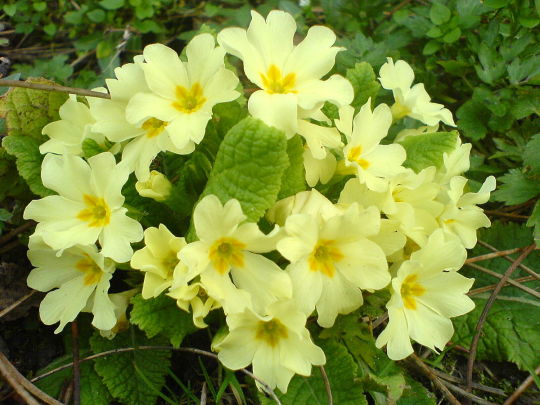

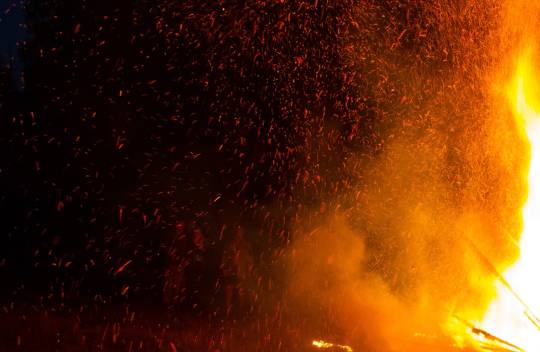
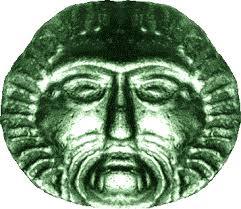
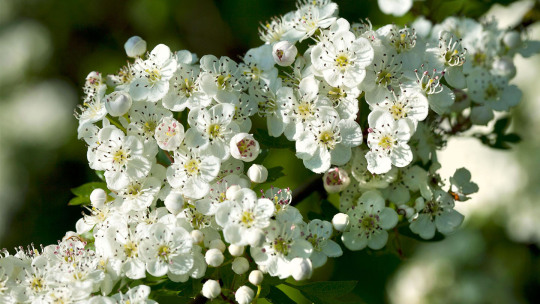
Spelling and Pronunciation
OI. Bealtaine (Bell-tin-Na) has more recently been written as I. Beltaine or Anglicized Beltane (Bell-tain). In the Cormac Glossary it is said to derive from the deity Bel and OI. 'Tene' meaning fire.
Dates
Most Reconstructionists celebrate Bealtaine on April 30th-May 1st, sundown to sundown. Iron age Irish (and other Celts) structured their days from sunset to sunset so while we now track this time as stretching over two days, they would have seen this period as one single day, being the first day of the month of May by the Gregorian calendar. Some Reconsructionists might prefer to celebrate by the Julian calendar which would place this holiday on May 13th-14th (by the Gregorian calendar), still of course from sundown to sundown. In the most traditional sense this holiday would have been celebrated when the livestock was moved from the winter grazing fields out to the summer grazing fields.
Importance in Mythos
Most mythological reference to this holiday comes in the form of the movement of peoples or invasions of peoples.
The mythological invasion of Partholon and his people occurred on Bealtaine and the plague that wiped them out also began on that date and lasted a week. The Tuath De Danann are said to have arrived on the island on Bealtine as well and lastly the Sons of Mil are said to have invaded on this date also (Macalister, 1940).
In later times when Christianity had made its mythologies the way of the land and the old deities were moved to the status of Fae this idea of movement and invasion seems to have persisted. Traditions hold that this date is a dangerous time for mortals as the aes sídhe are moving amongst the daoine sí and may stop by unsuspecting homes to ask for butter or perhaps some water, but if this request is granted they will steal the homes luck for the year.
I will make a note here that while the Cormac Glossary notes the deity Bel there is no Celtic/Gaelic deity of this name (though there is a Mesopotamian one) and this seems to cause a lot of confusion, especially when it comes to Wiccancentic ideas and articles. Cormac was likely referring to the Celtic/Gaelic deity Belenus NOT the Mesopotamian Bel. Belenus/Belenos was associated with the sun and healing and during the Gallo-Roman period was often noted to be the Gaelic Apollo. There is evidence to suggest that Belenus/Belenos was known throughout the Celtic/Gaelic world, though we don't have any specific information about how prominently he was worshiped in Ireland itself it is relatively safe to assume that the Iron age Irish would have known who he was.
Celebration Traditions
Like on Samhain, at the opposing 'end' of the year livestock were transitioned from one grazing area to another. While on Samhain, when the 'dark' half of the year begins and the livestock are moved in from summer grazing to winter grazing, Bealtaine is the opposite. It begins the 'light' half of the year and livestock are moved from the winter grazing out to the summer pastures. At both holidays to ensure healthy animals and protect them from any malicious factors great bonfires were built (most notably on the hill of Uisneach) and livestock would be driven between them.
There seems to be a traditional emphasis on the protection of homes, barns, livestock, peoples, and crops. Generally this seems to be a time when warding against ill luck for the community became a focus. Yellow, specifically yellow flowers (primrose, gorse or hawthorn blossoms), appear to have played a role in this as they have been used to decorate, but when exactly this tradition originated is unknown. The healing wells of Ireland and specifically the dew on the morning of Bealtaine have been thought to be important. Some traditions hold that the dew, when washed with will bring beauty, while others think if drank by the milk cows it would cause them to produce more, but again the origins of these traditions are relatively unknown.
Interesting History to take into Consideration
Given Bealtines long lasting history in Irish mythological tradition of being associated with mass movements of peoples and a need to protect ones family and community in this tumultuous time it is -possible- these ideas persist due to the movements (and possibly famines or plagues) during the "Megadrought" of the Bronze age (1250-1100 BCE). Most studies have focused on the effects of the Mediterranean at this time, but it is reasonable to assume the ripples of effects could have been felt strongly enough in Ireland to leave a lasting impression, especially since it is not outlandish to assume that people fleeing the Mediterranean area, which was no longer able to adequately sustain them, may have fled to the more temperate British Isles and passed on their trauma through oral tradition. This could possibly be backed up by looking at the etymology of 'Bel' not as referencing Beleus/Beleos but as referencing the Irish Balor (or perhaps they are different aspects of the same figure) who embodies not the life sustaining properties of the sun but the deadly and destructive ones. Balor balcbéimnech, 'Balor the strong smiter,' Balor birugerc, ' Balor of the piercing eye,' Balor mae Doit meic Néid, 'Balor son of Dot son of Néit.'
This is obviously only my personal opinion and can be taken or dismissed as one likes.
#celtic mythology#celtic reconstructionism#celtic paganism#celtic reconstructionist#Irish#celtic#irish mythology#irish reconstructionist#irish reconstructionism#irish paganism#beltaine#Bealtaine#Beltane#festival#fire festival#blackcrowing
223 notes
·
View notes
Note
Do you know any books on household magic that isn't influenced by Wicca? Thank you very much!
I really don't actually 😓 most books on that topic in general are pretty saturated with the Wiccan world view/misconceptions
My recommendations for finding some information would be to try looking into folk practices, as opposed to household magic. You're going to find essentially the same concepts but framing it from a folk practice lean is going to be more likely to result in something of substance. When you're checking to see if a book is any good I recommend always finding the one star reviews and reading those, those people are going to tell you if the book was authentic or if it was generic garbage.
I also recommend, though its more work on your part, looking into different blogs and historical information about folk practices. You obviously don't need to stick to one particular group if you don't want to, but looking up specific practices is also going to result in better quality information.
For example you may want to know some ways to bring luck into your home, you could try finding information like 'luck charms, luck spells' etc. or you could look up something like 'Appalachian folk magic for luck' or 'Slavic folk magic for luck' once you get information for very specific cultures you can then adapt to your personal needs as you see fit.
The more specific and limited you can be when trying to find information the more likely you are to find quality information.
I really hope this helps and if you need any help trying to find something specific I'm always happy to take a shot at it! (research comes naturally to me and I'm kinda a nerd for it)
#folk traditions#folk magic#folk practice#ask#anon#blackcrowing#books#magic#household magic#house witch#house magic
4 notes
·
View notes
Text
Protecting home and fortune: Irish folk customs for Bealtaine
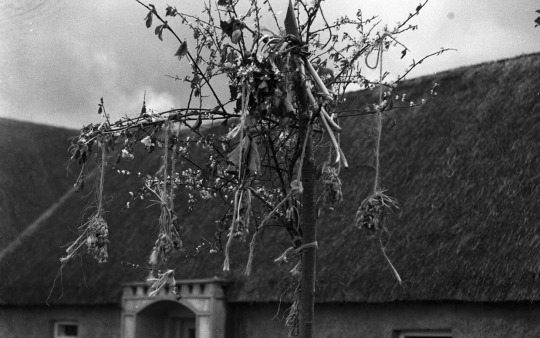
Bealtaine, also known as May Day, marked a pivotal point in the Irish calendar. It signified the arrival of summer, a time of light, warmth, and the promise of a bountiful season ahead. However, Bealtaine also held a sense of unease. This was a time when the boundary between our world and the Otherworld thinned, inviting the potential for both blessings and misfortune from the unpredictable Good Neighbors. To navigate this delicate balance, people turned to time-honored traditions and a heightened awareness of the risks of everyday life.
Appeasing the Good Neighbors
On Bealtaine, it was widely believed that the Good Neighbors became particularly active. To ensure their goodwill and prevent them from causing mischief, people would leave out food and drink as offerings. The belief was that the the Good Neighbors were attracted to these offerings and would be less likely to cause trouble if they were satisfied.
You all know May is the month of the fairies. Great people or men that lived long ago rises from their graves on every night in the month of May to fight the old battles that they fought long ago these men are called fairies. The bad fairies do great harm and trouble in the month of May they kill cattle take away milk and butter from the cows and alot of other mischief. Source
"The fairies come around our houses too to do mischief as well as they come to the cattle; you should sweep the hearth very clean and leave food aside for them. If you don't the fairies will come when you are asleep and will torment you by tricking you or pinching you." Source
Primrose
Primrose was believed to ward off the Good Neighbors, and scattering them in the doorways and window sills of the home created a barrier no troublesome spirit could cross.
"During the first three days [of May] fairies entered the house. They came disguised as old men or women in order to steal coals and in order to prevent them primroses were scattered on the doorway no fairy could pass this flower." Source
"The best preventive of fairy power was to scatter primroses on the threshold, for no one could pass the flowers and and the house and house-hold were left in peace." Source
"Guard the house by a string of primroses across the door on the first three days of May. The fairies can pass neither over nor under the string." Source
Rowan
This tree was seen as potent protection against otherworldly forces. A branch hung above a cow's stable door could ward off those who might steal the milk, ensuring the cow's blessing for the year. Branches decorated with spring flowers were also placed around the house for a bit of extra good luck.
On May Day before sunrise the eldest member of the family gets up, he goes out, pulls a branch of the rowan tree and hangs it over the cow's stable door. This is done to prevent the fairies from taking any of the milk from the cows. Source
Another custom is to get a branch of Rowan tree and decorate it with may flowers and primroses and leave it in the middin standing. Then strew may-flowers into each outhouse door and on the doorstep and in the windowsills. This is to welcome the good fairies so that there will be good luck round the year. Source
If you put a rowan tree up the Chimney nothing can bring the butter out of the house. Source
The May bush: blessing and protection
The May bush was a common custom in Ireland, particularly in Leinster, South and West Ulster, and some areas of Munster and Connaught. The May bush often featured hawthorn branches brought home and decorated with flowers, ribbons, and colorful eggshells saved from Easter.
The May bush was believed to protect the home from evil spirits, particularly fairies and witches. It was also thought to bring good luck and prosperity, especially in relation to milk and butter production.
It is a great custom also to make a May bush on May day. This consists of a bush, which is put standing in the dungpit. The bush is decorated with flowers and eggshells. The eggshells are kept after Easter Sunday. Source
On May morning a Maybush was placed outside each house. It usually was a yellow furze bush with a number of eggshells stuck on the thorns. Source
The people around this place make May-bushes on the first of May. They pull a bush and gather flowers and tie them on to the bush with strings and stick it on the ground and after that they say their prayers around it to honour our Blessed Mother and they make a little Altar and put flowers every day on it during May. The people long ago used to make May-bushes and they also used to make a little Altar. Source
The evening before the first of May the people go out and get a piece of a certain tree which they call May Pole. They put this bush outside the door and they put all the egg shells they had on Easter Sunday on it. They also put a lot of flowers out side too. If the people do not put up the May Pole the fairies will come. They also tie May Pole to the cow's tail and if they do not, the fairies come and take the milk from the cow. Source
Guarding your luck
Bealtaine is a time that came with a heightened fear that any careless act could invite bad luck for the whole year. During Bealtaine, even seemingly simple acts held risk.
Giving away even staples like milk, butter, or coins risked also surrendering your good fortune. Lending a tool or sharing even a hot coal from your hearth could lead to unexpected misfortune.
On May eve no one cares to give away any milk or butter fearing their luck would be taken. Source
Long ago the people used to have a large number of pisreogs on May day...They would not give away anything to anybody on May day, only to a beggar man. When he would come in they would give him great welcome. They would say he was bringing in the good luck. The old people would not allow anybody to bring fire outside the door. Everybody would have matches on May day. The old people would not allow any fire outside the door. Source
On May Eve or May Day nothing is given out of the house. Source
They considered it unlucky to give butter or milk way to any person on May Day as they would be giving away their luck. No stables were to be cleaned out on that day. The first person to go to the well in the morning was supposed to have luck for the rest of the year. It is not right to give money to anyone on that day. But if you get money on that day you will be getting it for the year. Source
The people of the house do not put out the ashes on that day or if a person asked for a coal they would be refused. Source
Another custom of the Irish, they would not lend any article or give either milk or food even to beggars. They would not light a fire on May Day until it was late in the day for fear that the people would see the smoke and would bring the butter. Source
The customs surrounding Bealtaine offer a fascinating glimpse into the rich tapestry of Irish folklore and the enduring human desire to shape our luck through ritual and tradition. Whether leaving offerings to appease unseen spirits, scattering flowers as wards against misfortune, or cautiously guarding their possessions, people sought to influence the unseen forces that shaped their lives. These traditions, born in a different time, speak to a fundamental human desire for control, for a sense of agency in the face of an uncertain world. While the specific fears and beliefs may have shifted, the impulse to use ritual and superstition as a means of navigating life's unpredictability remains surprisingly relatable.
#Bealtaine#beltane#may day#irish folklore#celtic paganism#irish paganism#irish pagan#pagan#paganism#witchcraft#witchblr#fire festival
51 notes
·
View notes
Photo
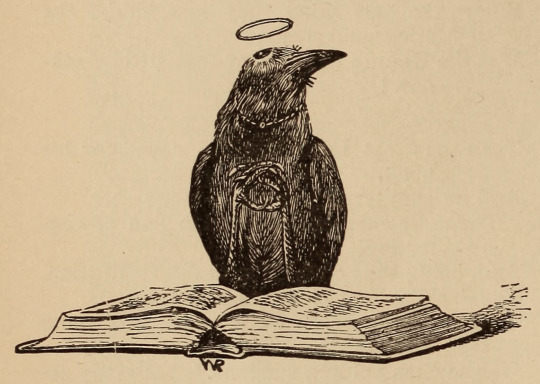
A crow with a halo. One thousand gems of genius in poetry and art. 1889.
Internet Archive
28K notes
·
View notes
Note
Could I get a reading? I've tried to do some readings for myself, but I think my own closeness to the issue is clouding my ability to interpret my pulls.
I'm currently at a crossroads of my spirituality and I don't know which direction to move towards. I feel like I'm spinning in circles and I can't seem to take a step in one direction. I'm hoping a reading could give some insight on where I might look to begin.
Thanks!
I 1000% understand, I can't do readings for myself either. I chose to use runes for you, since you didn't specify, in my experience they tend to be a bit more straightforward where ogam tends towards metaphors more often, so hopefully we can get something that will help you out.
the first thing I see is a warning around your passionate energy, I'm not sure if this is a warning to conservative it more or possibly a warning about the direction you're taking that energy currently. Also off by themselves are the mundane and monetary, or resources. all together this is indicating to me that either those things should not be included in the direction of your practice or they are distracting you from your direction.
Now I'm getting very strongly that you've been given something... I believe it might be a gift for a particular talent... but this thing you were given seems to have really upset you or thrown off your grove. you're being encouraged to grow this talent. I think you need it and are going to either be very strong in it or get a lot of inner strength from it. There general seems to be a lot of resistance on your part towards this gift but from what I see its development is pretty inevitable and I don't see any downsides to you embracing it.
I hope that helps clear things up! please let me know if I can assist any further!
0 notes
Text
Bealtaine Customs
Bealtaine is almost here!
Bealtaine (bee-YAL-tin-eh) is the ancient Irish fire festival that starts the night of April 30th- Oíche Bealtaine- and is celebrated May 1- Lá Bealtaine (though festivities can last longer). Bealtaine marks the beginning of summer. In modern Irish Catholic tradition, May is celebrated as the month of the Blessed Virgin Mary.
These quatations are all pulled from the dúchas.ie folklore collection. To learn more, go to https://duchas.ie
Significance of Fire

The ashes was never put out on May Day long ago.
-Mrs. French, Co. Mayo
A central theme of Bealtaine is fire, as it is with all the Irish fire festivals. On the eve of the holiday, all fires were put out. A central fire was lit at the heart of the island, which spread throughout:
On May Eve the Druids lit the great sacred fire at Tara and as the signal flames rose up high in the air and then a fire is to kindled on every hill in Erin; till the whole island is on fire with fires.
-Patrick Healy Co. Galway
A similar tradition has been revived at the Hill of Uisneach.
Having a bonfire and spreading the light from that central point would be a great way to honor the sacredness of fire and celebrate Bealtaine.
Back then, people would also guide their cattle through two bonfires at Bealtaine, to cleanse and bless them for good health and abundance. Speaking of cattle...
Protecting Cattle

The people also tie a piece of red cloth on each cows' tail. This they tie on in the morning before letting them out. They do this to prevent the fairies from taking the cow's milk. Sometimes they tie a horse-shoe-nail or "táirgne crúth" in the cow's tails
-Mrs. Nora Maloney, Co. Mayo
On May Eve now people sprinkle Easter water on all the crops, cattle etc. and on the boundary fence. Perhaps this is apart from it's religious aspect a survival of the old dread of 'pishogues' when people dreaded harm to their crops and cattle.
Long ago the people went out on May morning and blessed the cow with a lighting candle.
-Patrick Lally, Co. Galway
And while we're talking about protection...
Yellow Flowers- Festive Protection
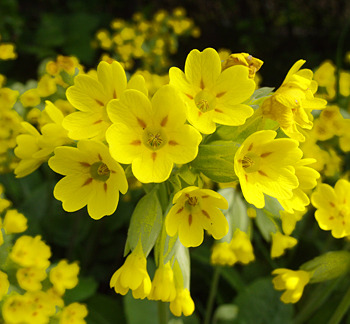

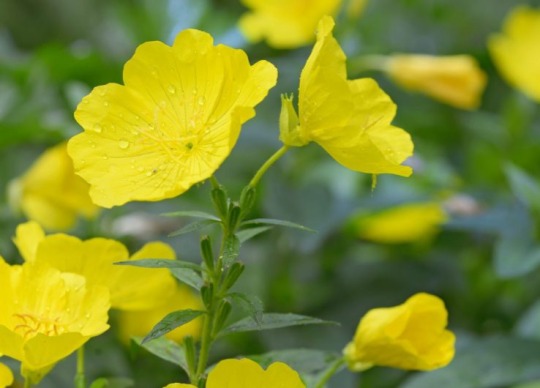
In years gone by the people used to throw a primrose in the byre door so that the fairies would not take away the milk from the cows for the year. It was at May eve that they threw this primrose in the byre door.
-William J Mc Laughlin
It is the custom for children to pick May flowers or Marsh marigolds on the last evening in April. These they throw on the doorstep or on the windowsill.
-Mrs. Norah Maloney, Co. Mayo
The first of May is called May Day or (Lá Bealtaine). On the eve of this feast the children gather may-flowers and place them on the window sills of the houses.
-P. Mc Closkey
"Cow-slips were hung on the door that day to bring good luck for the year."
-Martin Costello, Co. Mayo
Try hanging up yellow flowers at your doors and windowsills for protection and good luck! If don't have any flowers, don't worry. There's another way to welcome in good luck...
May Day Dew

It is also said that if you get up early on that morning and wash your face with the dew on the grass you will be healthy during the year.
-Collected by Anthony Clark
They washed their faces in the dew on May morning before the sun rose and and they would not get sunburned again for the year.
- Mrs. French, Co. Mayo
If a person wanted to preserve their beauty , they would have to get up one hour before sun-rise and wash their face in dew off the grass on May morning.
-Collected by Amy Gilligan, Co. Mayo
That's all well and good, but there is something more sinister that May morning dew is useful for...
Baneful Butter Stealing
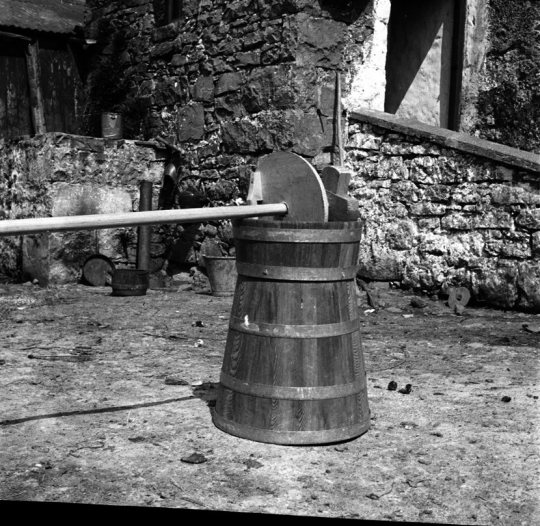
Long ago, on May morning, lots of old woman went out in the morning before the sun arose and swept the dew of the grass by pulling a long rope after them and calling, "Come all to me, come all to me.” This was a kind of witchcraft, taking away butter of other people’s milk.
-Collected by Rudy Stronge, Co. Donegal
It is also believed if one goes out early and milks the neighbour's cow, they will be able to get all the butter from that cow's milk so they will have double the supply while their neighbour will not get any.
Long ago on May morning some people used pull three ribs from the cow's tail and take clay from her hoofs and bring it home. Then that person would have butter from the cows she did this to and the person to whom the cows belonged would have none after churning.
-Michael Costello, Co. Mayo
Some women used get a twig of mountain ash and put it under the churn on May Day and so get all the butter from her neighbours churn, on condition that she said she wanted the butter from her neighbours churn while making her own.
-Mrs. Butler, Co. Mayo
While I don't condone butter theft, Bealtaine seems to be the right time to do it. Let's look at another way to celebrate!
The May Bush


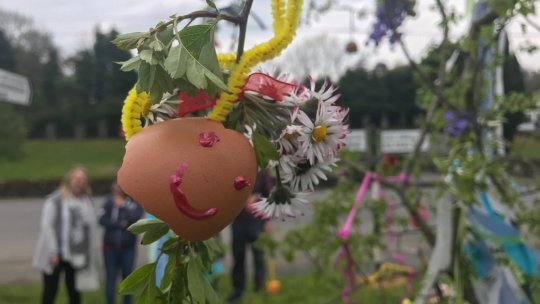
On May day morning, children get a small haw-thorn bush or at least a branch of one on which there is haw-thorn in bloom. On this bush they tie all kinds of coloured ribbons, papers, tinsel or other decorations left after the Xmas decorations till it is a gorgeous sight.
-Collected by Joan Martin
While hawthorn is the traditional tree chosen for the May bush, it's important to remember that the Irish tradition states to never ever bring hawthorn indoors.
This quote's sort of a miscellaneous one, but I thought it was interesting.
On May Night long ago the people used to leave a cake and a jug of milk on the table because they thought the Irish who were buried in America and other countries used come home on that night and visit their own home. Another old custom was to leave the doors unlocked that night. They considered it unlucky to give butter or milk way to any person on May Day as they would be giving away their luck. No stables were to be cleaned out on that day. The first person to go to the well in the morning was supposed to have luck for the rest of the year. It is not right to give money to anyone on that day. But if you get money on that day you will be getting it for the year."
-Mrs. Joyce, Co. Mayo
Ah, can't forget the ancestors. Or the diaspora! ;)
An incredibly common tradition I saw while scrolling through dúchas (I really recommend you do it yourself! They have everything!) was that milk, coals, salt, money, or really anything isn't to be given away at Bealtaine, or you'll lose something for yourself. Something supernatural about Bealtaine surpasses the Irish tradition of hospitality. This to me really highlights a theme of abundance. Welp, that's all I have for now!
🌼☀️Beannachtaí na Bealtaine oraibh!☀️🌼
#bealtaine#beltane#pagan#witchcraft#witches#irish paganism#folklore#folk witch#paganism#irish folklore#pagan witch#witch community#witch tips#folk magic#wheel of the year
287 notes
·
View notes
Text
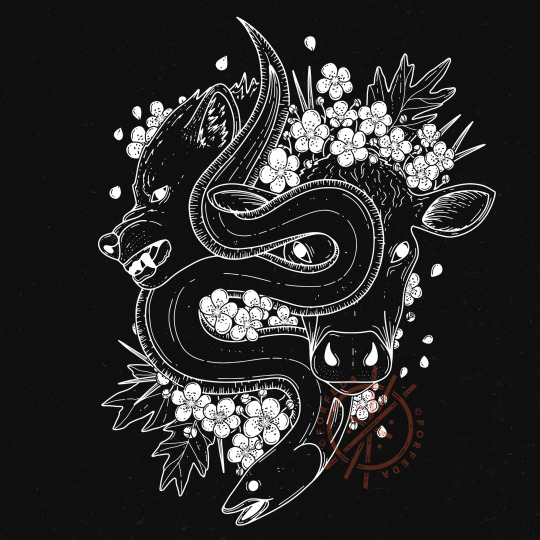
PHANTOM AT THE FORD
"I will come against you in the form of an eel about your feet in the ford, so that you shall fall…
I will drive the cattle on the ford to you, in the form of a grey she-wolf…
I will come to you in the form of a hornless red heifer before the cattle. They will rush on you on the plains and on the fords, and on the pools, and you will not see me before you…"
- The Morrígan to Cú Chulainn, Táin Bó Cúailnge
In the Táin Bó Cúailnge ("the Cattle Raid of Cooley"), the warrior Cú Chulainn is able to stave off the advances of Queen Medb's army by invoking his right to single combat at fords, singlehandedly defeating each of Medb's champions in turn. But when Cú Chulainn refuses help from the Morrígan, a powerful goddess, she resolves to instead be a hindrance to him, taking different animal forms to disrupt his battles - an eel to trip him, and a wolf and a heifer to drive the cattle over the ford.
This piece depicts the three forms of the Morrígan surrounded by the thorns and flowers of the hawthorn, a tree connected to terror, baneful magic, and the powers of the Otherworld in Gaelic folklore.
194 notes
·
View notes
Photo

Irish Ollamh and an Heraldic Bard by Charles Hamilton Smith
15 notes
·
View notes
Photo

Distribution of known Ringforts across Ireland.
204 notes
·
View notes
